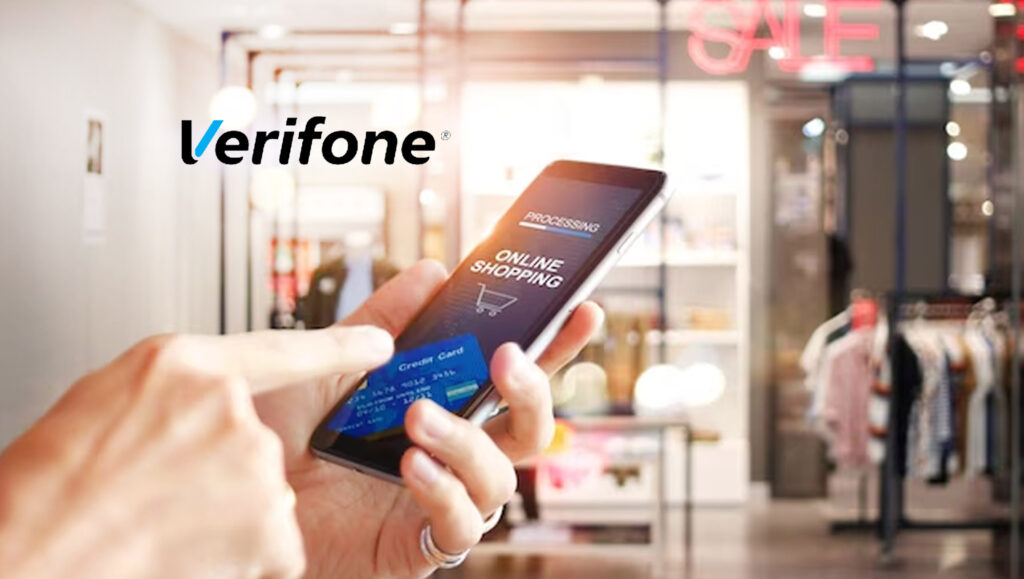2023 focus for merchants should center around checkout optimization and omnichannel commerce
Verifone, the FinTech leader providing end-to-end payment and commerce solutions to the world’s best-known brands, today announced survey results identifying key insights into consumer online shopping expectations and trends for 2023. Highlights include insights into what consumers expect from the checkout flow and how businesses can meet the increasing demand for adaptive shopping experiences. Results are based on a shopper survey conducted by Verifone across 995 global respondents.
Despite a difficult year, marked by uncertainty, recession and shifting business conditions, respondents acknowledged shopping online with greater frequency. With increasing digital penetration accelerated by the 2020 pandemic and lockdowns, almost half of users (49 percent) reported buying more online in the past twelve months versus previously. About a quarter (25 percent) did note a reduction to their online spending while the remaining 26 percent did not register any significant change to their online shopping or spending.
Of the online categories shopped most frequently, essentials like beauty and personal care (61 percent) and food and beverages (56 percent) took the first spots. Those were closely followed by fashion (55 percent), electronic devices and household items (50 and 49 percent, respectively), and entertainment (47 percent).
Read More: SalesTechStar Interview with Mike Carpenter, CEO at XFactor
Convenience and social proof were the main drivers for shopping online. Half of respondents stated that they shopped on digital channels to save time (52 percent) and find greater product diversity (49 percent). User reviews, deal comparisons and promotional offers were also of great importance, as evidenced by 48, 47 and 42 percent of responses, respectively.
When queried about which characteristics an online vendor would absolutely need to have to get their business, respondents placed the availability of their preferred payment methods at the top, followed by the existence of physical locations for servicing or returns, and the availability of product reviews. Other aspects ranked by importance included loyalty and reward programs, and the option to pick up ordered items in-store.
When it came to the online shopping journey, the checkout experience was a central deciding factor, with respondents having a clear expectation of what should happen in the “cart.” Social proof (44 percent), favorite payment methods (41 percent) and localization (40 percent) were respondents’ top trust elements prior to purchase. On the opposite side, checkout cost surprises were the main cause of cart abandonment. More than half of those surveyed (57 percent) admitted to abandoning a cart in the last year because of unexpected delivery costs. Other reasons included product-availability issues discovered at checkout (27 percent) and no way to contact seller with questions about the purchase (22 percent). The survey also highlighted the importance of payment options on conversions, with one in five respondents declaring that they would abandon the cart and purchase if their preferred method was not available.
Read More: Make your Business Smarter with Field Service Technology
As for favorite payment methods, cards still trump other options, but digital wallets are challenging cards’ supremacy. Almost 70 percent of users listed cards as their online buying go-to option, followed by digital wallets, a top choice for half of those surveyed (50 percent). Newer Alternative Payment Methods (APMs) are also gaining more followers. Just over a quarter of respondents (27 percent) also used Buy Now, Pay Later (BNPL) options for online shopping.
The survey also found no significant negative impact on the online shopping experience from the introduction of mandatory Strong Customer Authentication flows in Europe. When questioned about how they perceived the new card payment authentication step, most of the Europeans surveyed responded positively to the new regulation: 36 percent appreciated the extra security, 34 percent agreed that the authentication process was smooth and not too disruptive and only 16 percent reported frustration with the extra step of having to authenticate their identity.
With online shopping on the rise, global shoppers are currently experiencing a blend of digital and physical touchpoints, as omnichannel scenarios become more prevalent in their day-to-day lives. The most popular cross-channel use case was found to be Buy online, collect in-store (49 percent), followed by Buy online, collect at pick-up point (39 percent), Buy online, return in-store (39 percent), and Browse in-store, wish-list and order online (22 percent).
“These findings confirm the shifts in shopper preferences we’ve been seeing for the past couple of years and further emphasize the importance of personalizing the online shopping experience. This is no longer a nice-to-have option, but a mandatory criterion in commerce. The companies that will manage to attract and retain audiences going forward will be those who successfully cater to these custom user expectations – whether we’re talking about payment methods, checkout experience or authentication flows – while synergizing the experience across channels, traditional and digital. At Verifone, we are proud to support merchants large and small with consolidated omnichannel approaches, creating seamless experiences online and in-store, with a modular offering that advances in tempo with market dynamics,” said Tim O’Loughlin, President Americas at Verifone.





















